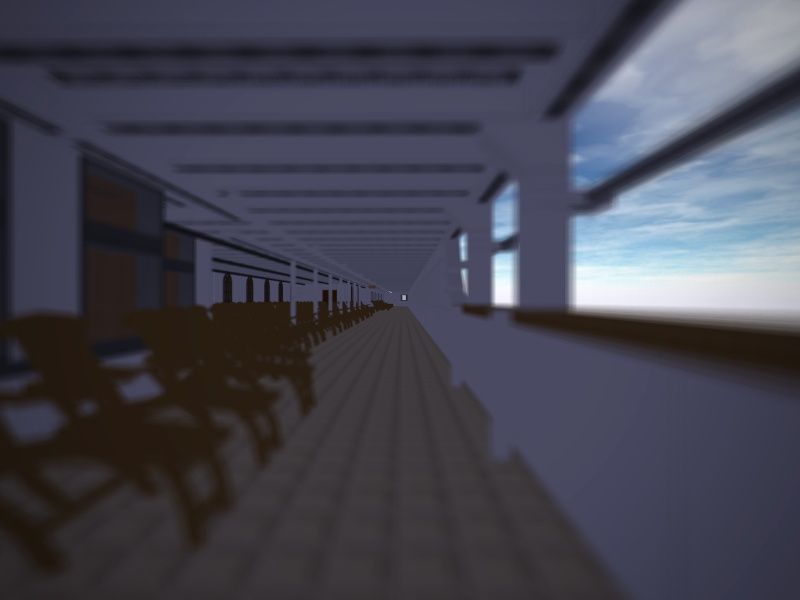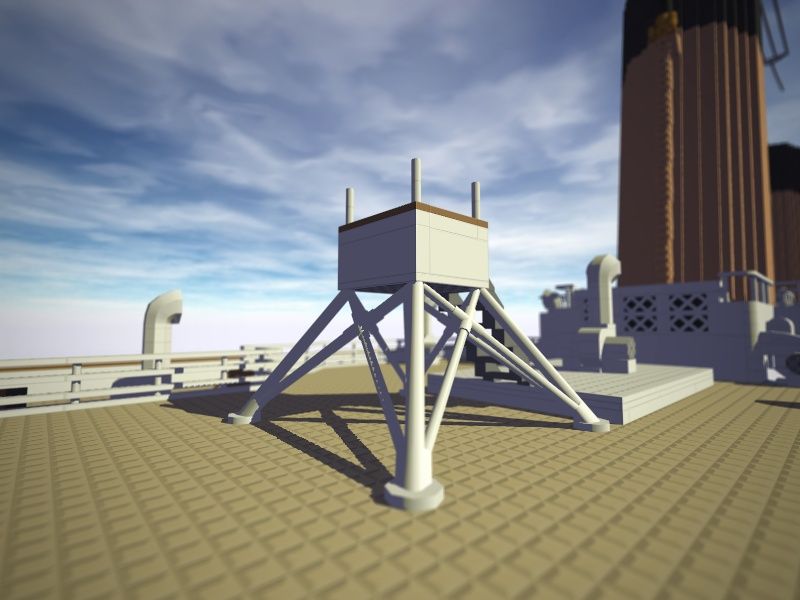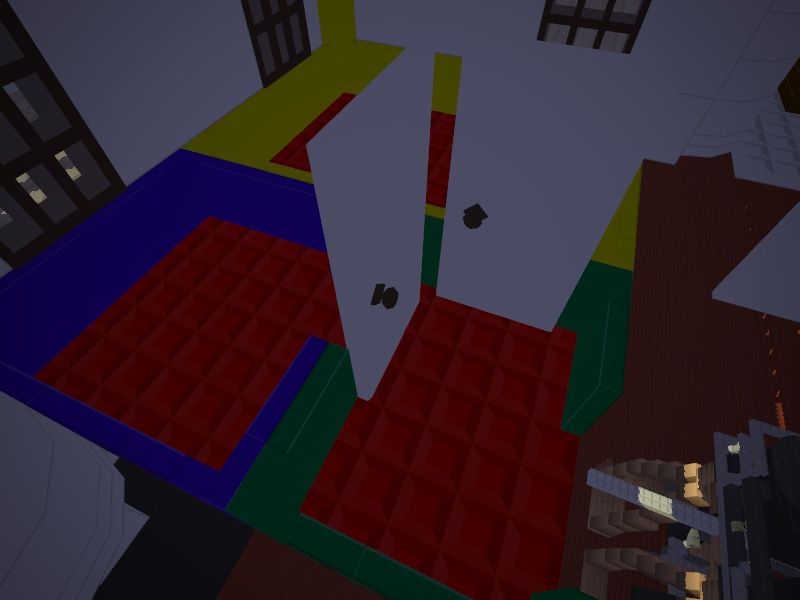It's-a-me! RMS!

Starting off the update is Hugums' mirroring work on the aft side of A deck and the front of B-deck, which, combined with NASABoy3000's mirroring work at the front of A deck, have greatly improved the first class promenade!

This is my first draft of
this group of telephones in the back of the ship's wheelhouse. Among other locations, one of these phones was linked with the crow's nest, and it was through that phone line that the words, "Iceberg, right ahead!" had been uttered.

Thirdly, Demian gave us a single-brick set of support for the ship's compass platform, and I added a set of poles to the platform on which an awning can be mounted. The compass platform was designed to be a place where an officer could come and track the ship's bearing according to the stars, with the aid of the most accurate compass on the ship. Because as little metal as possible was used in the construction of the compass platform, there would be very little interference for the compass located here, which is why it should theoretically be the ship's most accurate compass.
Finally, I leave you fine folks tonight with this in-progress shot:

I use various colors for the cabin's inside walls and floors. I find working on this specific cabin quite sobering, and here's why: there's a man I encourage you to do a bit of research on, named Thomas Andrews. He is widely credited as Titanic's shipwright, which means he designed the ship. No one on the ship, or perhaps even no one in history, knew that ship as well as he did. He worked at the Harland and Wolff shipyard, overseeing construction of the Titanic. He was eventually a part of a group of the yard's hardest workers, known as the "Guarantee Group," who joined Titanic on her maiden voyage to make sure that the ship ran smoothly. As a part of the guarantee group, Thomas Andrews had a first class room, A-36, seen in the early phase of construction above.
When Titanic sank, it is said that Thomas Andrews was so focused on poring over blueprints and drawings of the ship that he didn't even notice the ship's collision with the iceberg, and remained unaware of it until the captain summoned him to the bridge. He could tell that the ship was doomed from early into the sinking simply by hearing about the damage and from his knowledge of the ship's design, so he spent the ship's final hours telling passengers to get their lifejackets and head to the lifeboats. Whenever he was last seen, by whom, and doing what, vary, but it is often agreed upon that less than an hour before the ship was completely submerged, Thomas Andrews was seen, possibly for the last time, staring into space in front of a painting over the fireplace in the first class smoke room, his lifejacket disregarded on a nearby table. One source even reports having seen him later on deck throwing deckchairs overboard to let people in the water use them as flotation devices! Thomas Andrews, however, did not survive the sinking, and, based on the eyewitness reports, likely even try to.
It would later turn out that Titanic actually remained afloat for almost an hour longer than even her shipwright had anticipated. The ship was so incredibly well-designed that when Deltamarin reviewed the plans in preparation for designing Titanic II, they were surprised by how excellently designed for her time the ship was. It's the work of a man who proved to be an excellent, selfless human being, and it's humbling and sobering to be replicating his cabin, on his ship and final resting place.